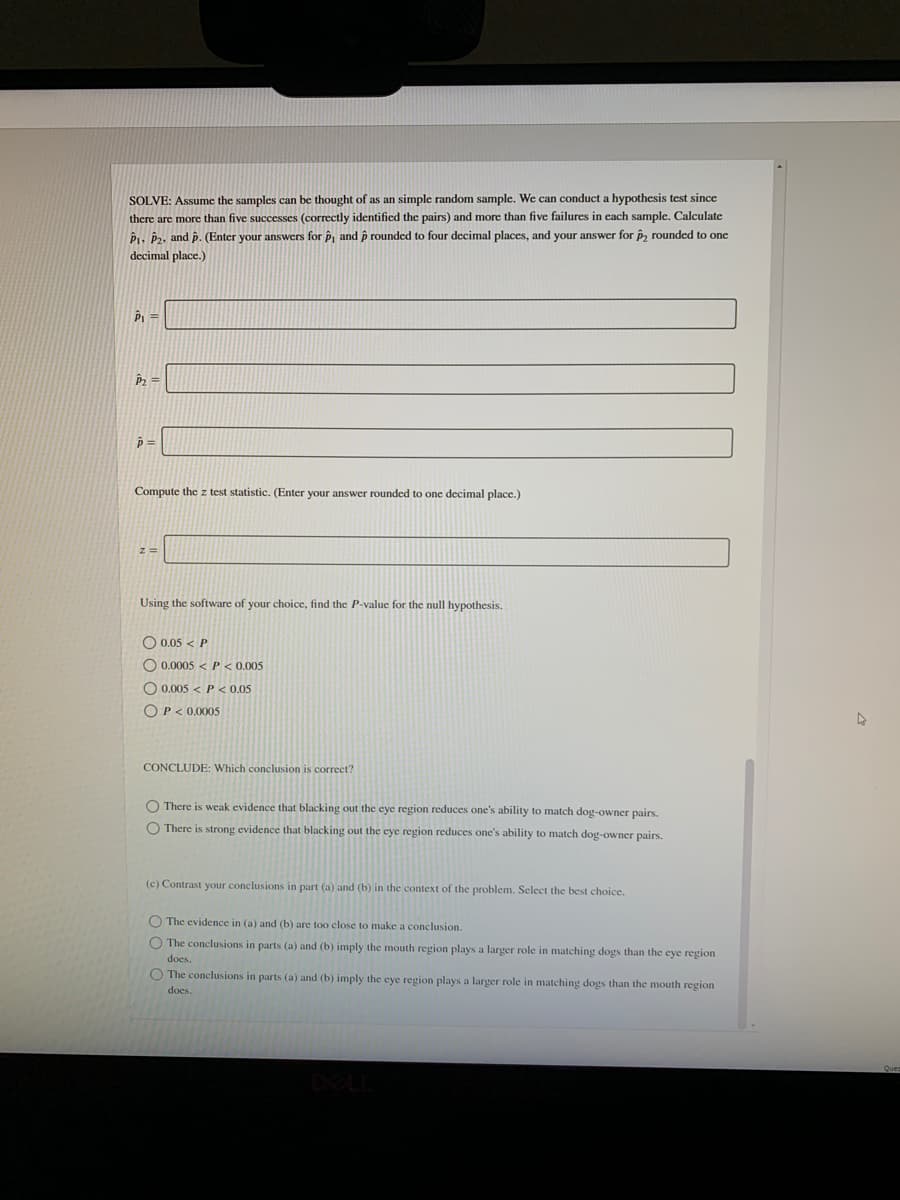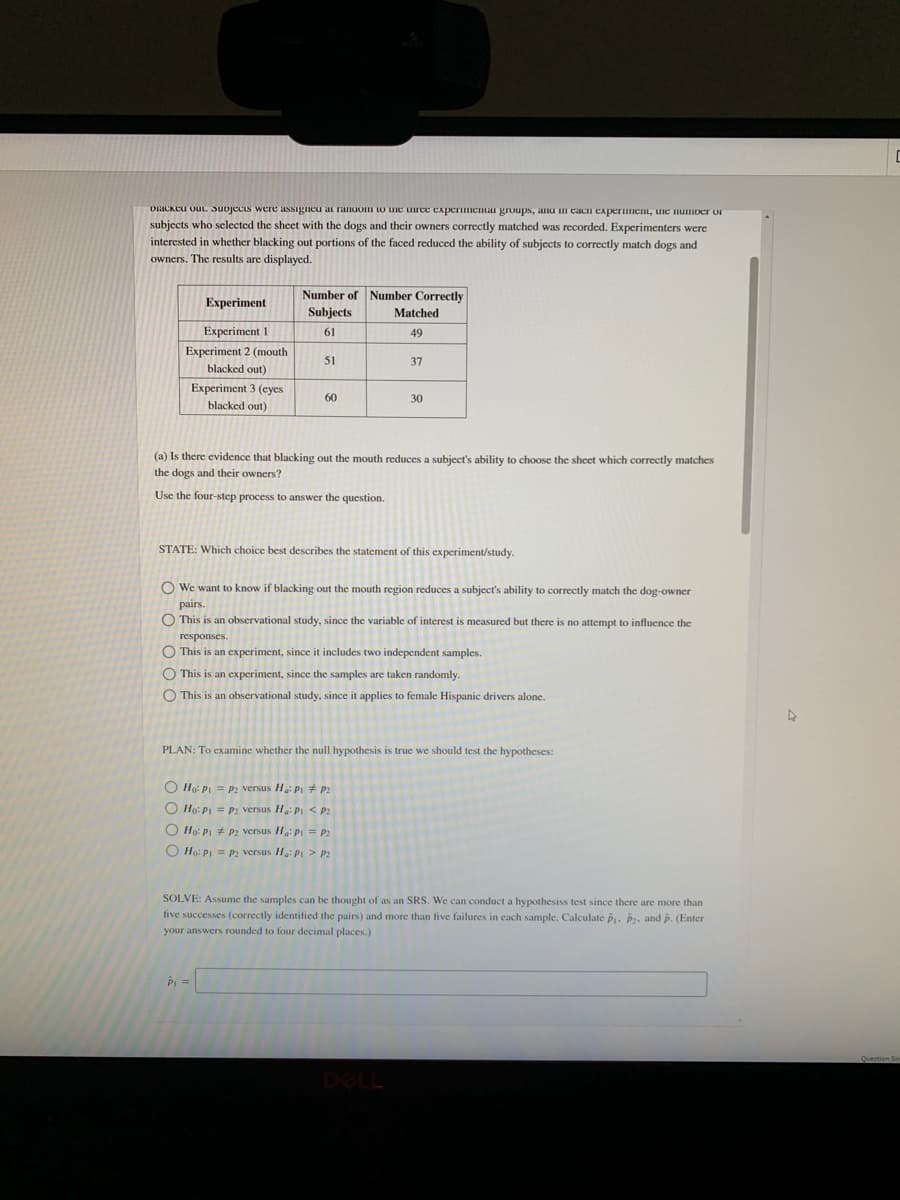DCKCU ouL. Suojecis were assigneu aL ranoom to uic uirce expernena groups, anu in cacn expermem, une numoer or subjects who selected the sheet with the dogs and their owners correctly matched was recorded. Experimenters were interested in whether blacking out portions of the faced reduced the ability of subjects to correctly match dogs and owners. The results are displayed. Number of Number Correctly Experiment Subjects Matched Experiment 1 61 49 Experiment 2 (mouth 51 37 blacked out) Experiment 3 (eyes blacked out) 60 30 (a) Is there evidence that blacking out the mouth reduces a subject's ability to choose the sheet which correctly matches the dogs and their owners? Use the four-step process to answer the question. STATE: Which choice best describes the statement of this experiment/study. O We want to know if blacking out the mouth region reduces a subject's ability to correctly match the dog-owner pairs. O This is an observational study, since the variable of interest is measured but there is no attempt to influence the responses. O This is an experiment, since it includes two independent samples. O This is an experiment, since the samples are taken randomly. O This is an observational study, since it applies to female Hispanic drivers alone. PLAN: To examine whether the null hypothesis is true we should test the hypotheses: Ho: PI = P2 Versus H Pi # P2 Ho: PI = P2 Versus H Pi < P2 O Ho: Pi # P2 versus H: Pi = P2 O Ho: PI= P2 versus H: pPI > P2 SOLVE: Assume the samples can be thought of as an SRS. We can conduct a hypothesiss test since there are more than five successes (correctly identified the pairs) and more than five failures in each sample. Calculate p. P and p. (Enter your answers rounded to four decimal places.)
Addition Rule of Probability
It simply refers to the likelihood of an event taking place whenever the occurrence of an event is uncertain. The probability of a single event can be calculated by dividing the number of successful trials of that event by the total number of trials.
Expected Value
When a large number of trials are performed for any random variable ‘X’, the predicted result is most likely the mean of all the outcomes for the random variable and it is known as expected value also known as expectation. The expected value, also known as the expectation, is denoted by: E(X).
Probability Distributions
Understanding probability is necessary to know the probability distributions. In statistics, probability is how the uncertainty of an event is measured. This event can be anything. The most common examples include tossing a coin, rolling a die, or choosing a card. Each of these events has multiple possibilities. Every such possibility is measured with the help of probability. To be more precise, the probability is used for calculating the occurrence of events that may or may not happen. Probability does not give sure results. Unless the probability of any event is 1, the different outcomes may or may not happen in real life, regardless of how less or how more their probability is.
Basic Probability
The simple definition of probability it is a chance of the occurrence of an event. It is defined in numerical form and the probability value is between 0 to 1. The probability value 0 indicates that there is no chance of that event occurring and the probability value 1 indicates that the event will occur. Sum of the probability value must be 1. The probability value is never a negative number. If it happens, then recheck the calculation.


Step by step
Solved in 3 steps




